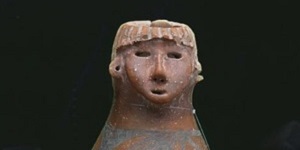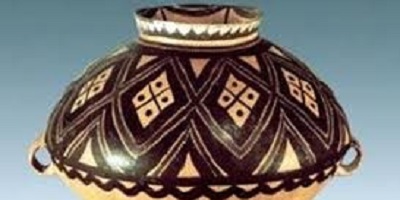Yangshao Culture: 100 Year Research History and Heritage Impact
Research Objectives
This project “Yangshao Culture: 100 Year Research History and Heritage Impact” will analyze the historiography of the Yangshao Culture as an archaeological construct and its functioning as a heritage icon for the Chinese nation as well as its impact on various societal concerns.
The Yangshao Culture refers to a cultural complex along the Yellow River in what is now central China (primarily Henan, Shanxi, and Shaanxi provinces) between 5000 and 3000 BC, named after its type site in the Yangshao village, in Mianchi County Many thousands of sites assigned to the Yangshao Culture are now known. The culture has been perceived as having a central role in the development of agriculture, pastoralism, and the invention of new material forms (including ceramics and polished stone artifacts) in Chinese prehistory. The discovery of the Yangshao Culture is within China considered to mark the birth of modern Chinese archaeology including both the development of field methods and its significance for political agendas.
There will be two strands of analysis; these will be integrated through a final synthesis reflecting on national iconic heritage. The two strands are:
1. Historiography of the Yangshao Culture, its discovery and the changes in interpretations since 1921. With the centenary of the discovery occurring during the project’s lifetime this will be a timely study.
The ‘Discovery’ of the Yangshao Culture
The Neolithic Yangshao Culture is commonly agreed to have been discovered in 1921 due to the explorations of the Swede J. Gunnar Anderson in collaboration with Chinese colleagues (YUAN Fuli, CHEN Deguang, BAI Wanyu and LIU Changshan).
J. Gunnar Andersson
Johan Gunnar Andersson (安特生1874-1960) was a Swedish geologist, paleontologist and later also archaeologist, closely associated with the beginnings of modern Chinese archaeology in the 1920s.
2. The subsequent development of the Yangshao Culture as heritage. Two strands will be pursued in this analysis.
2.1. Investigation of how the culture has been understood as heritage
This study is an investigation of how the culture has been understood as heritage, especially its role in the formation of Chinese nationalism. With its long research history, the Yangshao Culture allows us to observe and to analyze in detail arguments about the origin of China’s national history as an archaeological imagination and to trace how it was used to energize Chinese archaeologists and historians, and socio-political significance arising from it being allocated a seminal role in the formation of a multi-ethnic Chinese nation. An additional interesting question is whether and how European appreciation of the Yangshao sites as the first prehistoric sites recognized in China, influenced China’s appreciation of her own heritage. This part of the project will aim at analyzing the use of the Yangshao Culture at both the level of government institutions and museums and at a more local popular level – how do people connect to the idea of this being ‘their’ heritage.
2.2. Analysis of how the Yangshao Culture has been integrated in mainstream cultural expressions
The study will focus on the commercial exploitation of the branding provided by reference to the Yangshao Culture and how in turn this may have impacted ideas of the past. The ‘Yangshao’ trademark has been used to promote products including wine, cement, glassware and pharmaceuticals, and to brand special local produce, such as fruit, millet, oil and tea, which are exported widely. This has set the stage for a competition among over 10 provinces with Yangshao Culture sites to promote each their version of the culture as the most ‘authentic’.






